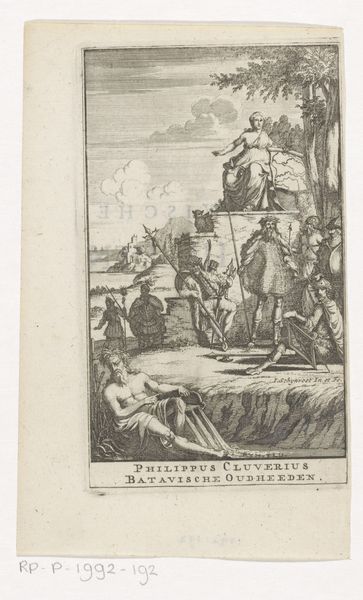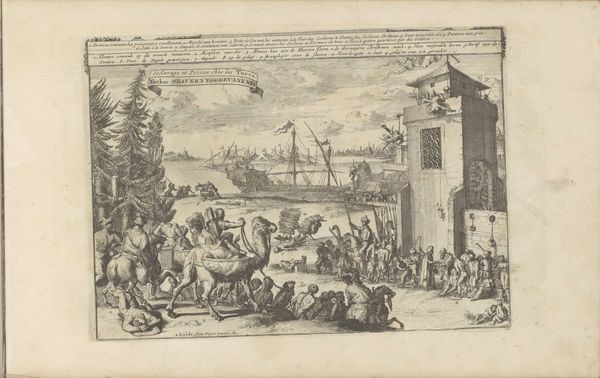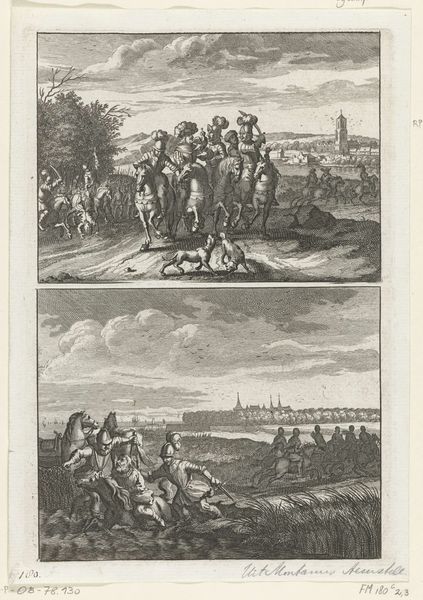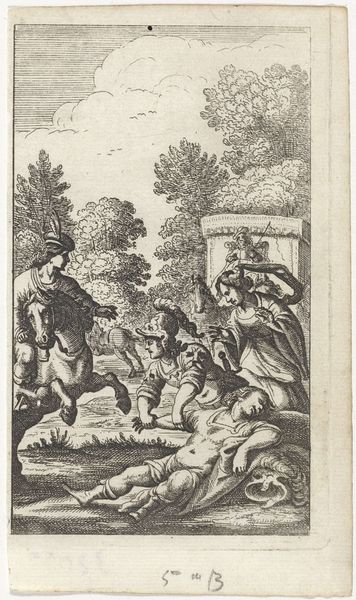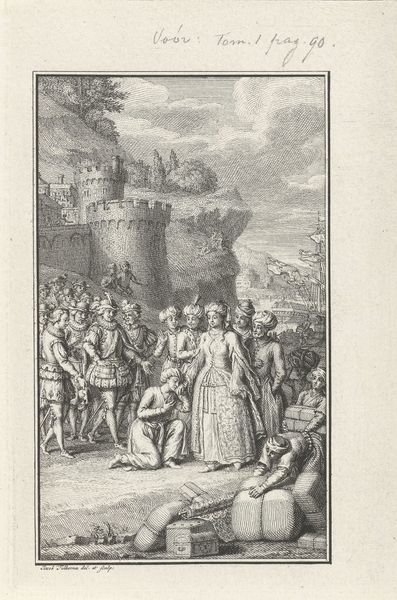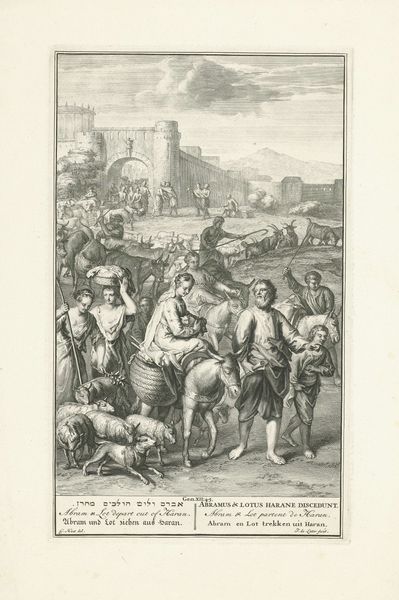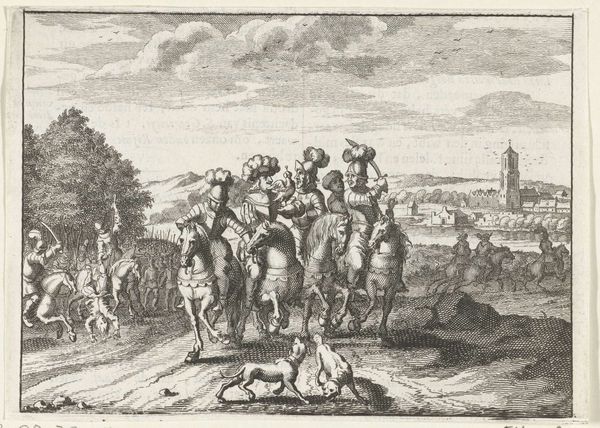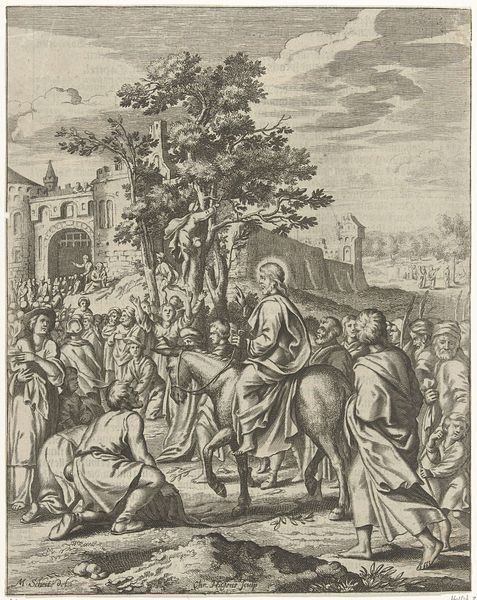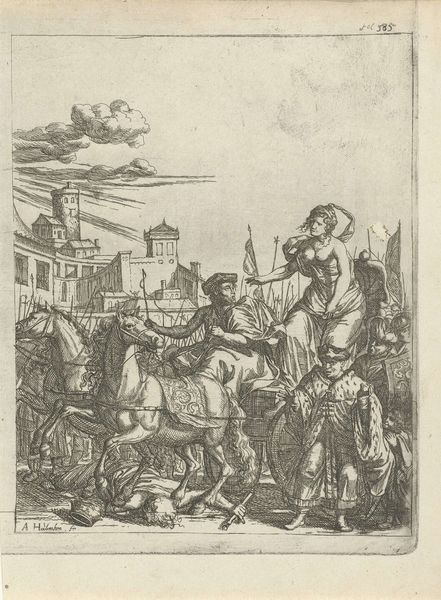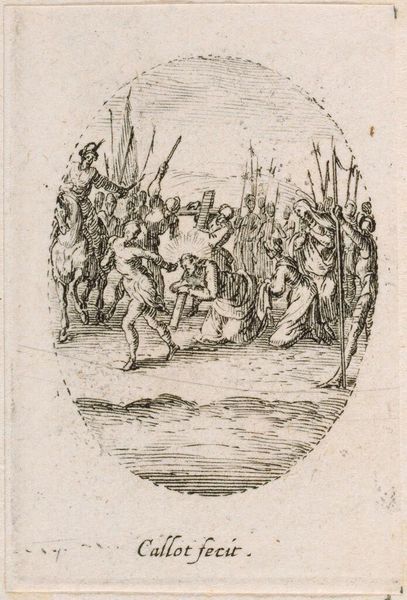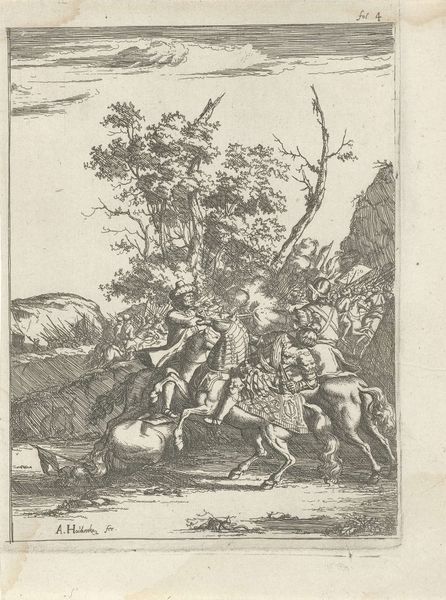
print, engraving
#
narrative-art
#
baroque
# print
#
old engraving style
#
landscape
#
figuration
#
history-painting
#
engraving
Dimensions: height 193 mm, width 151 mm
Copyright: Rijks Museum: Open Domain
Curator: I find the atmosphere of this print immediately striking. It evokes a sense of a somber procession. What do you see? Editor: A procession it certainly is, and fraught with complex power dynamics. What we are looking at is "The Conquest of Tunis by Charles V," an engraving dating back to 1676 by Herman Padtbrugge. The print depicts Charles V's military victory in Tunis in 1535, a key moment in the struggle for control of the Mediterranean. Curator: Absolutely, and let's consider Padtbrugge's visual language here. He meticulously uses line and tone to evoke emotional weight and recall previous imagery linked to victorious leaders and conquerors. Notice the details of Charles V, on horseback—what a charged, long-established, symbolic pose of authority. It communicates triumph, yet also signals the onset of shifting historical and cultural identities. Editor: Indeed, and it's essential to analyze this image through the lens of colonialism and power. While seemingly celebrating Charles V, Padtbrugge's creation prompts questions regarding the representation of power. In what ways do symbols, as established, reify asymmetric positions? Take a moment to observe the bowed figures in the foreground offering Charles V objects—symbols of submission, right? What are the effects of this conquest on local populations in Tunis, on their livelihoods and self-determination? Curator: It makes me ponder how visual culture can unintentionally shape history and our understanding of collective narratives. I look to the cloudy sky, which does not give a sense of joy, more a sign of something looming on the horizon, foreboding and the suggestion of inevitable change. Editor: It underscores that so much history, certainly colonial history, depends on how a narrative is visualized and perpetuated across generations. It serves as a reminder that representations, in their time and afterward, wield immense power to legitimize ideologies. And so, by considering coloniality as an ongoing structure, the print offers an opportunity to reflect upon our place in history. Curator: So very true, in understanding that line between then and now. Editor: Absolutely. Every mark tells a story.
Comments
No comments
Be the first to comment and join the conversation on the ultimate creative platform.
